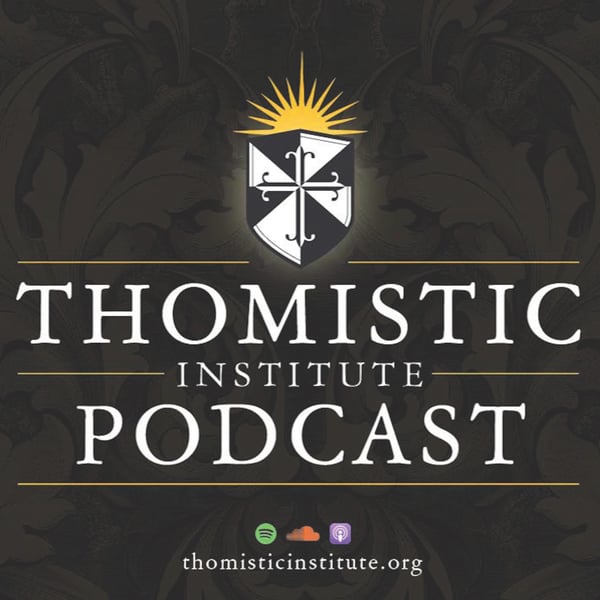Returning to Constantine: Protestant Theocracies | Prof. Carlos Eire
The Thomistic Institute
The Thomistic Institute
4.8 • 729 Ratings
🗓️ 19 August 2022
⏱️ 71 minutes
🧾️ Download transcript
Summary
This lecture was given on June 14, 2022 at the Dominican House of Studies in Washington, D.C. as part of The Civitas Dei Summer Fellowship: "The City of God in Modernity: Culture and Ecclesiology." The slides for this lecture can be found here: https://tinyurl.com/mpfttpnh For more information on upcoming events, please visit our website at www.thomisticinstitute.org. About the speaker: Carlos Eire, who received his PhD from Yale in 1979, specializes in the social, intellectual, religious, and cultural history of late medieval and early modern Europe, with a focus on both the Protestant and Catholic Reformations; the history of popular piety; and the history of the supernatural, and the history of death. Before joining the Yale faculty in 1996, he taught at St. John’s University in Minnesota and the University of Virginia, and was a member of the Institute for Advanced Study in Princeton for two years. He is the author of War Against the Idols: The Reformation of Worship From Erasmus to Calvin (1986); From Madrid to Purgatory: The Art and Craft of Dying in Sixteenth Century Spain (1995); A Very Brief History of Eternity (2010); Reformations: The Early Modern World (2016); and The Life of Saint Teresa of Avila: A Biography (2019). And he is co-author of Jews, Christians, Muslims: An Introduction to Monotheistic Religions (1997). He has also ventured into the twentieth century and the Cuban Revolution in the memoir Waiting for Snow in Havana (2003), which won the National Book Award in Nonfiction in the United States and has been translated into more than a dozen languages. His second memoir, Learning to Die in Miami (2010), explores the exile experience. A past president of the Society for Reformation Research, he is currently researching attitudes toward miracles in the sixteenth and seventeenth centuries. His recent book Reformations won the R.R.Hawkins Prize for Best Book of the Year from the American Publishers Association, as well as the award for Best Book in the Humanities. It was also awarded the Jaroslav Pelikan Prize by Yale University Press. All of his books are banned in Cuba, where he has been proclaimed an enemy of the state – a distinction he regards as the highest of all honors.
Transcript
Click on a timestamp to play from that location
| 0:00.0 | This talk is brought to you by the Tamistic Institute. |
| 0:02.7 | For more talks like this, visit us at Tamistic Institute.org. |
| 0:11.1 | Today, we deal with the breakup of the medieval church-state order, which means it's the breakup of what was called |
| 0:27.0 | Christianitas or Christendom. |
| 0:30.3 | And it forever changes, forever, you know, up to now anyway, has changed Christianity and Western culture and Western civilization. So let's take a look at that. |
| 0:44.9 | And I'm going to take you through first some interpretations of the meaning of what happened, |
| 0:52.5 | and then some of the details of what actually happened. |
| 0:56.3 | Why this title, why returning to Constantine, Protestant theocracies? |
| 1:02.0 | Well, actually, you know, it would probably be more correct to say returning to Theodosius |
| 1:07.8 | rather than Constantine. |
| 1:09.4 | But Constantine begins the symbiosis between the Christian Church and the Roman Empire. |
| 1:16.6 | And it became in many places a complete symbiosis, total reliance of the church and the state on each other. And it breaks up. |
| 1:32.0 | But the Protestants established in many ways a closer relationship between church and state |
| 1:39.3 | than had existed before. That's why Protestant theocracies. And this is a Catholic image, |
| 1:46.8 | of course, Catholic propaganda. These are the Protestant reformers trying to destroy the Catholic |
| 1:55.2 | Church unsuccessfully. But you see that they're being aided by the devil. And they're trying to, they've got chains wrapped around the four towers there, |
| 2:09.6 | which are the four great fathers of the West, St. Gregory, St. Ambrose, St. Augustine, and St. Jerome. But they are not succeeding. |
| 2:22.1 | This is Luther and his associates. It's what the little blurb says on the lower left-hand corner. |
| 2:30.2 | But they're all failing. But what happened? And how did we get here? I'm sure you're all failing. But what happened? |
| 2:35.3 | And how did we get here? |
| 2:37.4 | I'm sure you're all familiar with these types of church signs, |
| 2:42.9 | which you find mostly in Protestant churches. |
... |
Please login to see the full transcript.
Disclaimer: The podcast and artwork embedded on this page are from The Thomistic Institute, and are the property of its owner and not affiliated with or endorsed by Tapesearch.
Generated transcripts are the property of The Thomistic Institute and are distributed freely under the Fair Use doctrine. Transcripts generated by Tapesearch are not guaranteed to be accurate.
Copyright © Tapesearch 2025.

